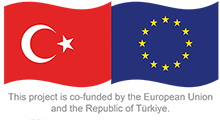Children attending early childhood education use learning centers to increase their social interaction and improve their problem-solving and decision-making skills
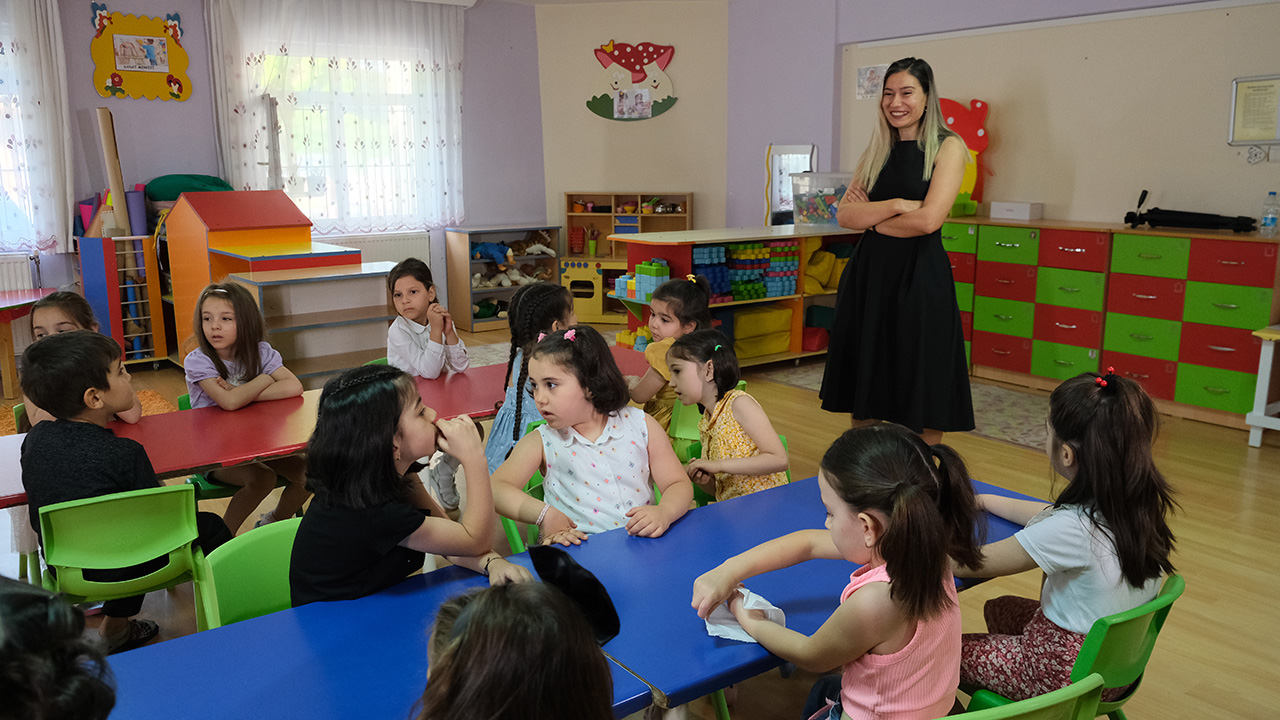
A classroom full of joy welcomes us at the Yarbay Fevzi Elagöz Preschool in Turgutlu, Manisa. The children immediately volunteer to take turns to show us the learning centers in their classrooms.
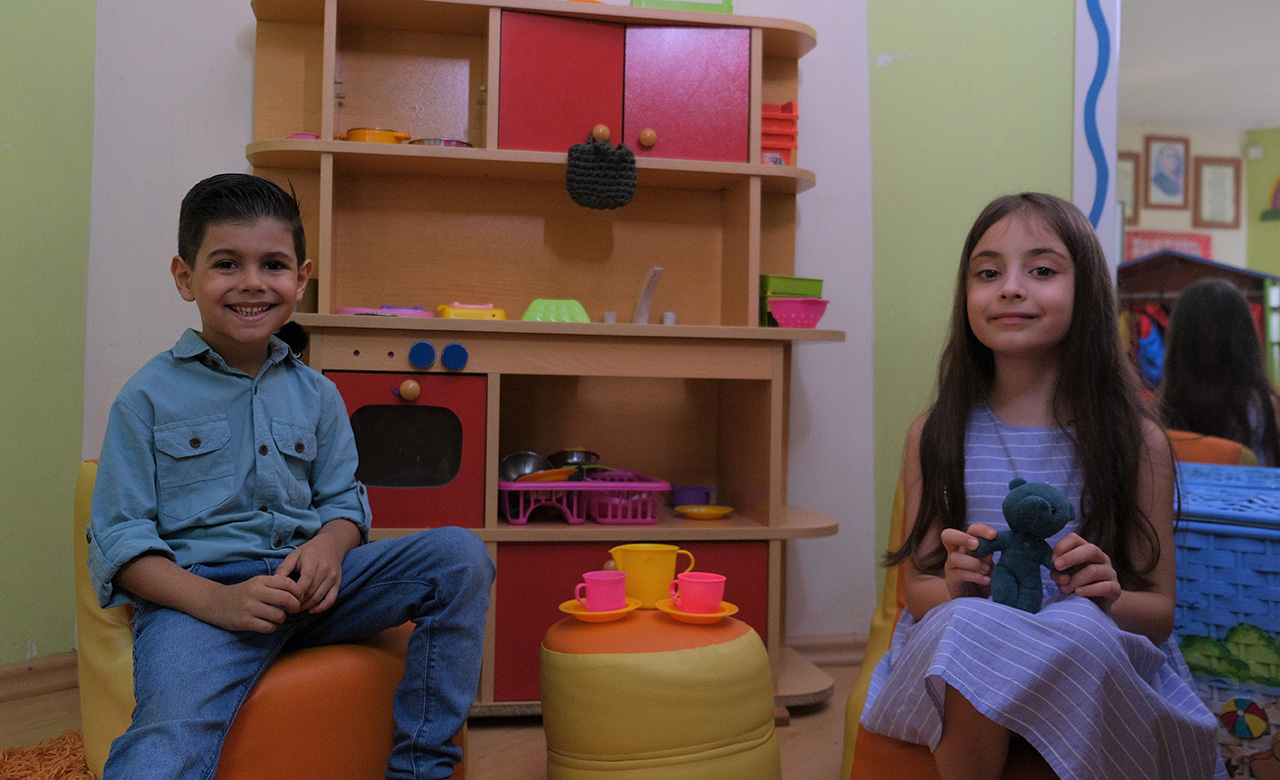
Teacher İlknur says, "In general, our biggest goal in early childhood education is for children to be able to express themselves and develop their communication skills. Especially the sharing they do here, learning by one-to-one experimentation, being together. We naturally provide them with social environments in our school that families cannot provide outside."
Neva (6), who chose the dramatic play center, says, "We cook and drink coffee at the dramatic play center. Sometimes we play games. We wear costumes and act," and Mustafa (6) jumps in with excitement: "We also play puppets with our friends!"
İpek, who chose the music center, introduces the musical instruments one by one: "maracas, tambourine, xylophone, this is the cymbal." Meanwhile, Egemen says, "And this is the darbuka! I love playing the darbuka" and starts to play for us.
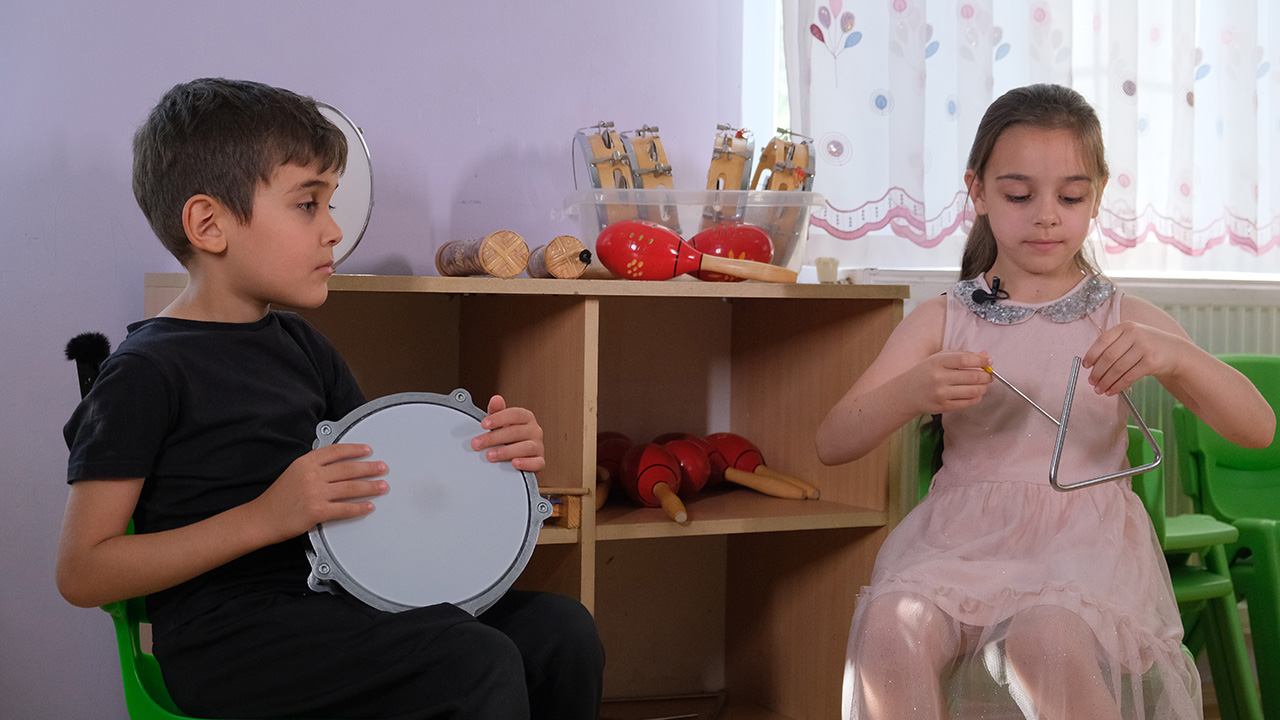

"Here we learnt how to use scissors, pencils, glue and watercolours," says Ece (6), who loves the art center, and shows us a picture she has drawn: "in this picture, my mum, dad, me and my brother are getting ready to go to the sea," she adds excitedly.
"In the reading and listening center, our teacher reads books to us. We listen to her and we like the books. Then our teacher asks us which page we like the most and we tell her. There are animals in this book, I like the pictures very much, so I like this book very much." says Elif Mira (6) and shows us her favourite page of the book she is holding.
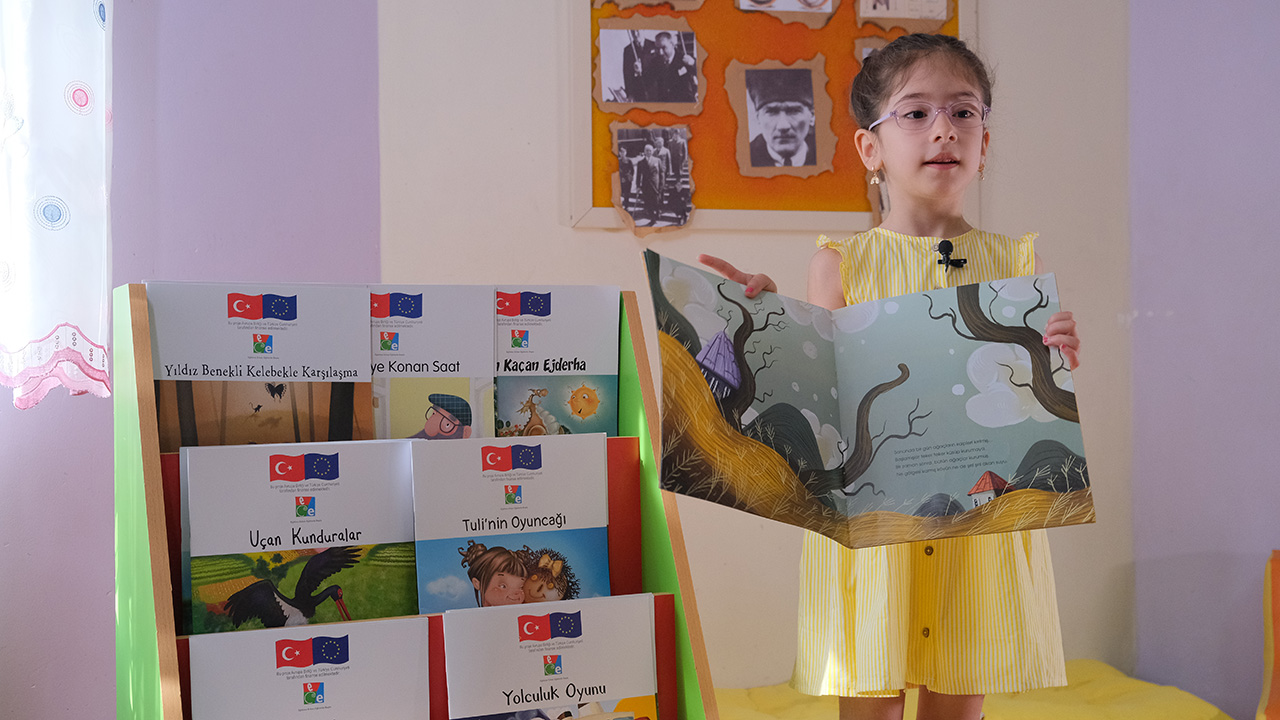
Buğlem (6) says, "We learn how to add and subtract with maths. For example, we went to the market." Gökçe, sitting next to her, immediately interjects: "We learnt how to get change at the market. Then we went to the school garden and measured trees with a pencil, ruler and measuring tape!"
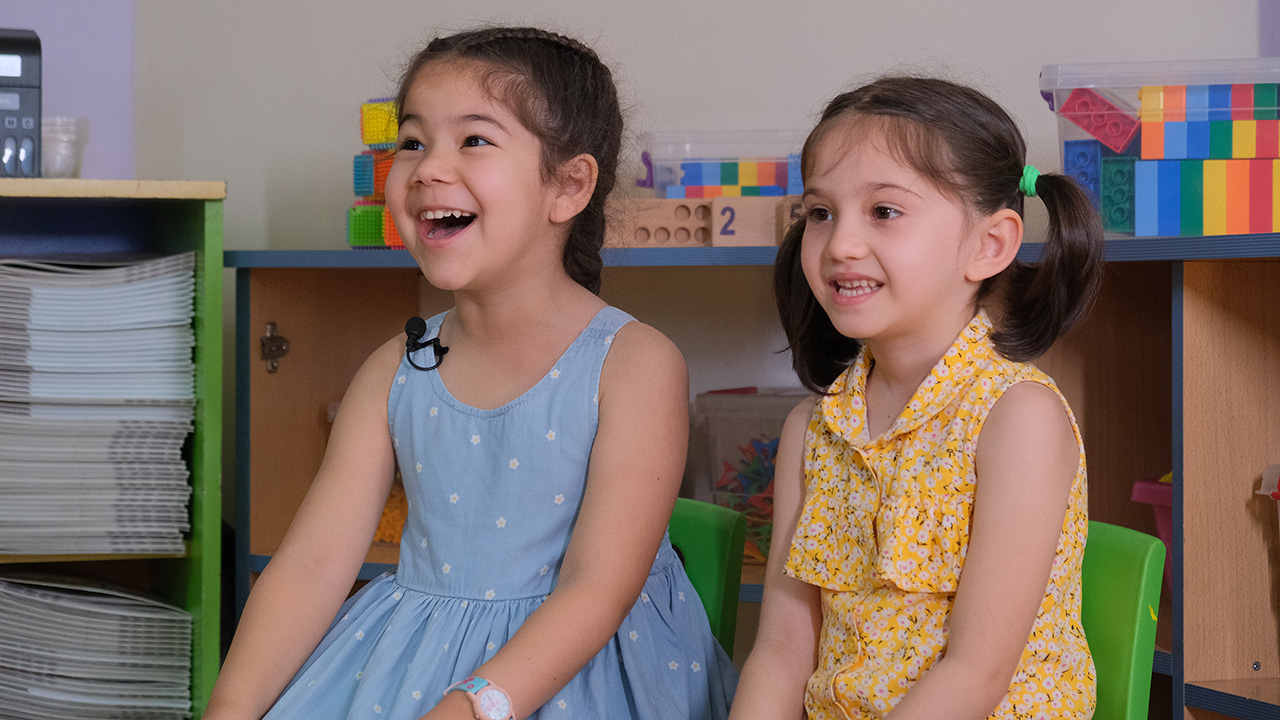
Vahit's (6) favourite learning center is the science center. "In the science center, I learn about the human body and how to clean my teeth. I also play with animal models. I love all animals, but my favourite is the tiger!" he says.

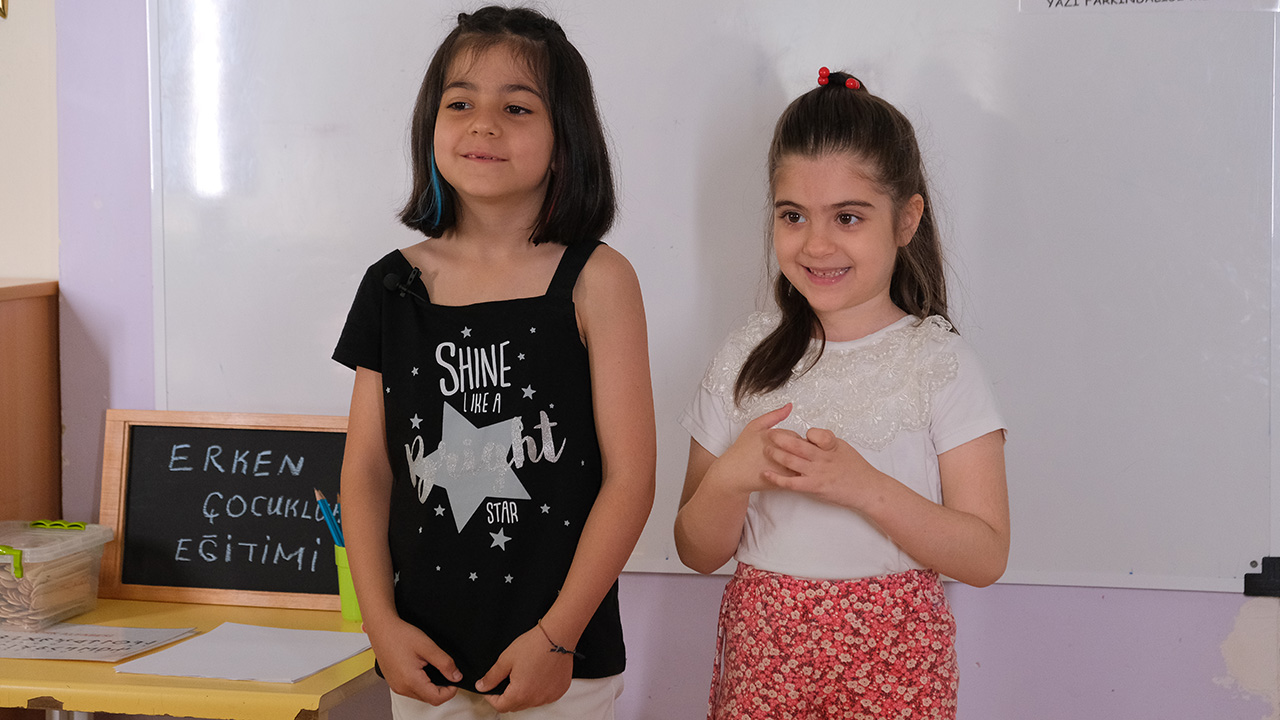
Zeynep (7) and Hilal Elif (6) introduces us to the writing awareness center," in this center we draw pictures and write the name of the person who drew them. We study some letters, sounds and spelling." says Hilal Elif and she adds: "He looked at the alphabets of different countries and played games about sounds and syllables. I want to be a teacher when I grow up because I love teaching children."
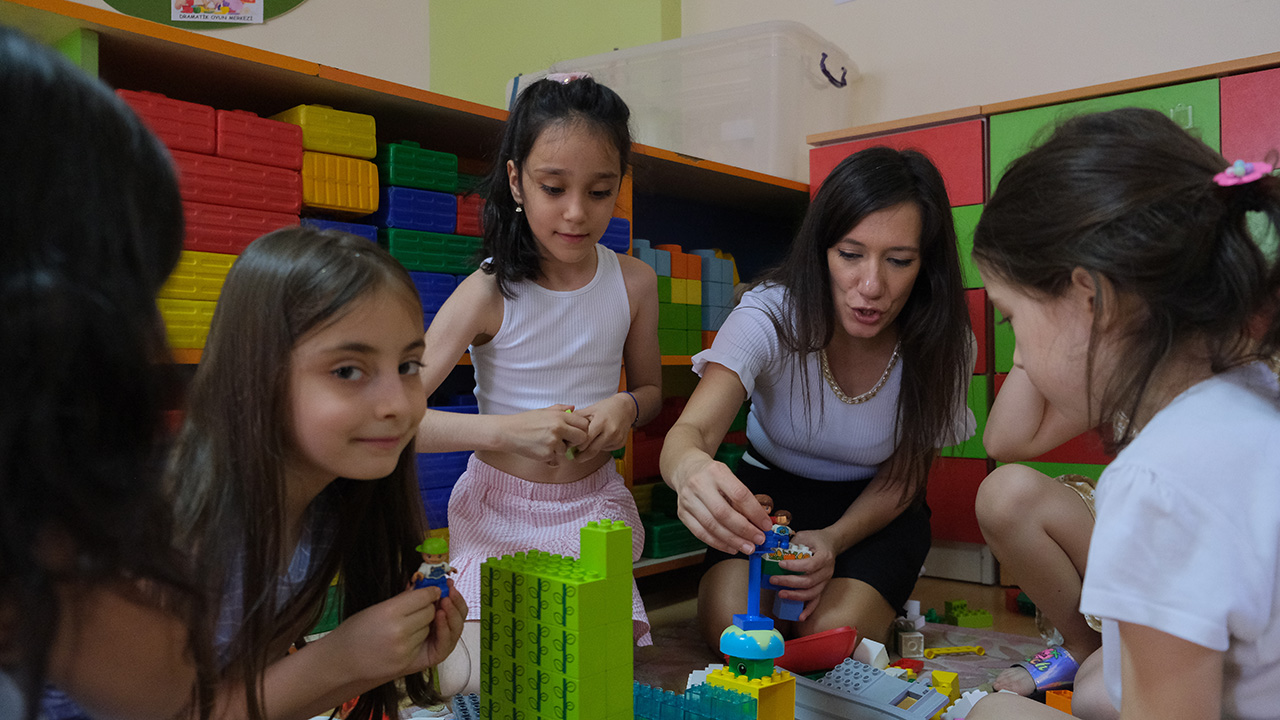
Gonca Teacher, a preschool teacher at the same preschool, says, "Children are especially interested in early literacy activities. Activities such as coding, patterning, painting, and especially activities where children develop their creativity are of great benefit to their development. In these activities, we focus on STEM (science, technology, engineering and maths) activities that prepare them for primary school."
Emphasizing that it is important for children to learn by doing activities on their own, Teacher Gonca says, "With the activities in the science center, children gain trial and error experience, they learn as they do things and gain experience. In the music center, we develop their music skills and help them acquire an ear for music. In the mathematics center, we try to support children's cognitive development by focusing on numbers and using blocks and bricks."
"For example, among the students who participate in coding activities, the number of those who say that they will be a computer engineer or work on computers in the future is increasing," says Gonca Teacher, he adds that learning centers are also important for children's career choices.


Talking about the 'I Grow Together with My Tree' project they developed with the students, Teacher İlknur explains the purpose of the project as follows: "our 3-year-old children planted olive saplings in the gardens. Since they will come here from the age of 3 to 6, they will be able to take a photo with the tree at the age of 6 and say, ‘we grew up with our tree.’”
"We do our best to develop our children's creativity and language skills, to fully prepare them for primary school and to make them ready to start the next educational institution. This year in particular, we have included phonemic awareness, writing awareness and early literacy activities in our programme, as well as many outdoor games and trips." Teacher İlknur says.
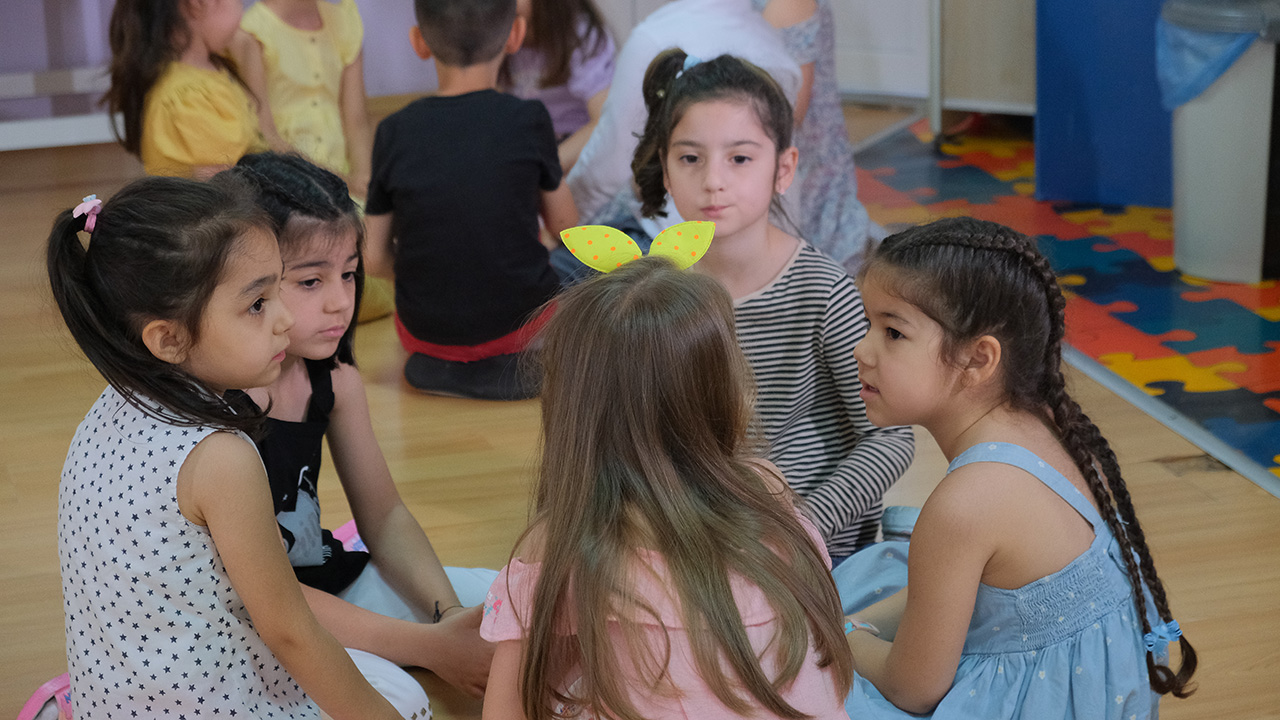
Teacher İlknur tells us about the game that children play with toy bricks as follows: "In this game, which we play with six bricks using the play-based learning method, the leader of one group makes a model with bricks and the leaders of the other groups come and see the model, but the other members of their team do not see it. Then, each leader goes back to his/her group and tries to explain the model to the team members, so that they try to make the model themselves in the way the leader explained it. In addition to developing language and leadership skills, this is an activity aimed at developing students' ability to communicate with each other and apply what they have learnt to the project at hand.”
Teacher İlknur continues her words as follows: “Thanks to the materials used within the scope of learning through play, learning has become concrete and fun, and we have ensured that children's learning is much more permanent. The books sent to our school by important authors and illustrators with the Project for Increasing Quality of and Access to Early Childhood Education also increased the quality of our education. We also made frequent use of our [1] activity books. Our new achievements and indicators shed a lot of light on us in terms of measuring children and observing their development."
1 Kozalak activity books developed within the scope of the project "Increasing Quality of and Access to Early Childhood Education" are used in classrooms under the guidance of teachers.
The ongoing project "Increasing Quality of and Access to Early Childhood Education" will support more than 50,000 children under the age of six. The project is implemented in partnership with the Ministry of National Education, the Ministry of Labour and Social Security (MoLSS), the European Union (EU) and UNICEF.

The ECE Project aims to increase access to and quality of early childhood education services for all children. The main target group of the project consists of children under the age of six, teachers, school principals and other ECE service providers.
